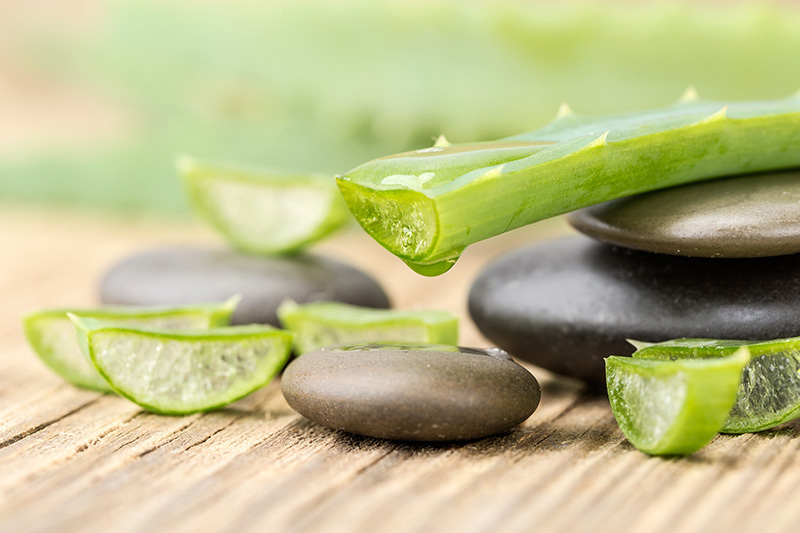Nurture Your Orchids with Expert Advice
Posted on 13/08/2025
Nurture Your Orchids with Expert Advice
Looking for expert tips to nurture your orchids? Whether you are a seasoned plant enthusiast or a beginner who just fell in love with these exotic blooms, caring for orchids can seem intricate. However, with the right orchid care guidance, anyone can transform their home into a flourishing haven for these stunning flowers. In this comprehensive guide, we will cover everything you need to know to nurture your orchids with expert advice--from understanding their unique needs to troubleshooting common problems. Let's help your orchids bloom beautifully year-round!
Table of Contents
- Understanding Orchids: A Brief Overview
- Choosing the Right Orchid for Your Home
- Creating the Ideal Orchid Environment
- Watering and Fertilizing Your Orchids
- Repotting & Pruning Orchids Like a Pro
- Solving Common Orchid Problems
- Expert Tips to Boost Orchid Blooms
- Orchid Care Through the Seasons
- Conclusion: Flourish With Your Orchids
Understanding Orchids: A Brief Overview
Orchids are one of the world's largest and most diverse plant families, boasting over 25,000 species. These captivating plants are prized for their unique and intricate flowers that can add an exotic touch to any space. From Phalaenopsis (Moth Orchids) to Cattleya and Dendrobium, each type demands its own form of nurturing.
- Phalaenopsis - Most popular, great for beginners.
- Cattleya - Known for vibrant colors and fragrance.
- Dendrobium - Hardy, prolific bloomers.
- Oncidium - Delicate, branching flower spikes.
- Vanda - Requires high humidity, stunning large blooms.
Understanding the needs of your orchid's species is the first step to nurturing orchids effectively.
Choosing the Right Orchid for Your Home
Before you begin nurturing, it's essential to choose the right orchid variety for your environment and experience level.
Factors to Consider When Selecting Orchids:
- Light Needs: Pick an orchid that suits the natural sunlight available in your space.
- Humidity Requirements: Some orchids need more humid conditions than others.
- Care Level: Beginners should start with forgiving species like Phalaenopsis or Dendrobium.
- Size & Space: Assess where you plan to keep your orchids--windowsill, terrarium, or hanging basket.
Phalaenopsis orchids are ideal for novice growers thanks to their adaptability and minimal maintenance. As your confidence grows, experiment with more demanding varieties to fill your home with exotic orchid displays.
Creating the Ideal Orchid Environment
Proper orchid nurturing starts by mimicking their natural habitat. While all orchids are unique, most thrive in environments similar to their native tropics.
Essential Environmental Conditions for Orchids
- Light: Most orchids enjoy bright, indirect sunlight. Too much direct sun can burn leaves, while too little light results in fewer blooms.
- Temperature: Orchids generally prefer a temperature range between 65?F and 75?F during the day, dropping slightly at night.
- Humidity: Maintain a humidity level of 40%-70%. Grouping plants or using a humidifier helps achieve the right atmosphere.
- Air Circulation: Fresh air prevents fungal diseases and keeps orchids happy. Use fans or open windows when possible.
- Potting Medium: Orchids rarely grow in regular soil. Use sphagnum moss, bark mix, or a specialized orchid medium for optimal root health.
For urban dwellers or those in dry climates, try using a humidity tray--a shallow dish filled with pebbles and water underneath your orchid pot.
Watering and Fertilizing Your Orchids
Correct watering is crucial for successful orchid nurturing. Overwatering ranks as the most common cause of orchid distress, closely followed by underwatering.
Watering Orchids: Expert Advice
- Check the Potting Medium: Only water when the top 1-2 inches are dry to the touch.
- Use Lukewarm Water: Orchids dislike cold water shocks. Always use room-temperature water.
- Water at the Sink: Allow water to run freely through the pot for even moisture. Let it drain thoroughly.
- Avoid Wetting Leaves: Water collecting between leaves may cause rot. Water the base of the plant instead.
A good rule for most orchids is to water roughly once a week, but adapt frequency based on species, climate, and potting material.
Fertilizing Your Orchids
Orchids have specific nutritional needs to blossom to their full potential. Follow these expert fertilizing tips:
- Use Orchid-Specific Fertilizer: Balanced formulas (20-20-20) diluted to half-strength are usually sufficient.
- Feed "Weakly, Weekly": Fertilize every week or two, but always with a diluted solution.
- Flush Monthly: Run clean water through the pot to prevent salt buildup from fertilizer.
- Skip Fertilizer During Dormancy: If your orchid isn't actively growing or blooming, reduce or stop fertilizing.
Repotting & Pruning Orchids Like a Pro
Long-term orchid nurture involves regular repotting and judicious pruning. Experts recommend repotting orchids every 1-2 years, ideally after blooming.
Steps to Repot Your Orchid
- Remove the Orchid Gently: Tap the pot and loosen the roots to avoid damage.
- Trim Dead Roots: Cut away any brown, mushy, or dried-out roots with sterilized scissors.
- Choose the Right Pot: Select a pot just big enough for the roots (clear pots help monitor root health).
- Refresh Potting Medium: Use fresh orchid bark or moss to promote airflow.
- Replant and Water: Center the orchid, fill in loose medium, and water lightly.
When and How to Prune
- After Blooming: Cut the flower spike back to the node to encourage new shoots.
- Remove Dead Leaves: Snip away yellowed or damaged leaves to keep your orchid tidy and healthy.
Repotting and pruning are essential to orchid vitality and continual blooming.
Solving Common Orchid Problems
Everyone encounters orchid care challenges at some point. Knowing how to diagnose and treat issues is a key part of nurturing orchids with expert advice.
Common Orchid Issues and Solutions
- Yellow Leaves: Often from overwatering or too much direct sunlight. Adjust your watering routine and move the plant to indirect light.
- Wilting or Droopy Leaves: Usually signals underwatering, dehydration, or root rot.
- Spotted Leaves: Indicates fungal or bacterial infection. Cut off affected areas and improve air circulation.
- Leaf Tip Browning: Excessive fertilizer or low humidity. Flush soil periodically and mist leaves if air is too dry.
- No Blooms: Insufficient light, over-fertilizing, or incorrect temperature swings.
- Pests: Mealybugs, scale, spider mites, and aphids can all attack orchids. Treat immediately with insecticidal soap or neem oil.
The more you observe and understand your orchid, the faster you'll be able to resolve common problems and keep them thriving.
Expert Tips to Boost Orchid Blooms
Are you longing for more prolific and longer-lasting orchid blooms? Try these expert nurturing strategies for exceptional orchids:
- Optimize Light: Ensure your orchid receives "bright, filtered light"--essential for blossom production.
- Encourage Night Temperature Drops: Orchids often need a 10-15?F cooler night temperature to trigger blooming.
- Prioritize Pot Size: Orchids prefer snug pots; too large, and they focus on root growth over flowers.
- Feed at the Right Time: Increase fertilizing frequency slightly as buds start to form.
- Provide Steady Humidity: Sudden drops can cause bud blast (buds shriveling and dropping).
- Patience is Key: Some species bloom only once a year. Stick with expert nurturing, and you'll be rewarded!
With these orchid bloom tips, your plants will put on a show-stopping display!
Orchid Care Through the Seasons
Orchids are sensitive to seasonal changes. Adjusting your care routine throughout the year ensures plants remain healthy.
Spring and Summer
- Increase Water and Fertilizer: Orchids grow most actively in warmer, longer days.
- Monitor for Pests: Warm, humid weather can attract unwanted guests.
Fall and Winter
- Reduce Watering: Growth slows, so let the medium dry out more between watering.
- Maintain Humidity: Use humidifiers as indoor air dries out with heating.
- Adjust Lighting: Shorter days may require supplemental grow lights.
Adapting to the natural rhythms of the year is a hallmark of expert orchid nurturing.
Conclusion: Flourish With Your Orchids
When you nurture your orchids with expert advice, you're rewarded with vibrant, long-lasting blooms and a thriving, healthy plant. Remember, successful orchid nurturing boils down to understanding the needs of your individual orchid, maintaining the ideal environment, vigilant watering and feeding, timely repotting, and attentive troubleshooting.
Orchid care is a journey, not a destination. As you hone your skills, you'll come to appreciate the exquisite nuances of these fascinating plants. Follow these expert tips and, with patience and care, your home will be a lush sanctuary of spectacular orchids for years to come. Happy growing!


Latest Posts
Unlocking the Full Potential of Your Hydrangeas
Nurture Your Orchids with Expert Advice
Simplify Office Decor: 10 Best Low-Maintenance Indoor Plants
Keep your holiday poinsettias vibrant longer
Your Birth Flower and Its Surprising Revelations About Who You Are





